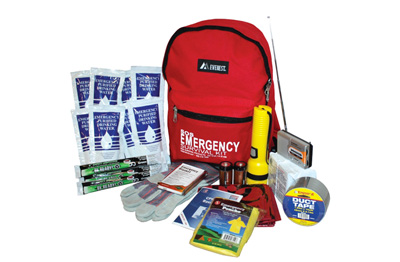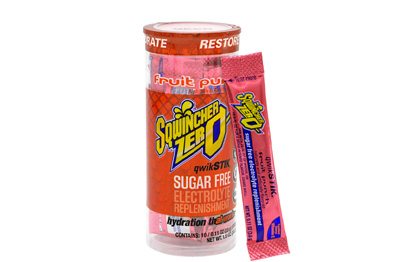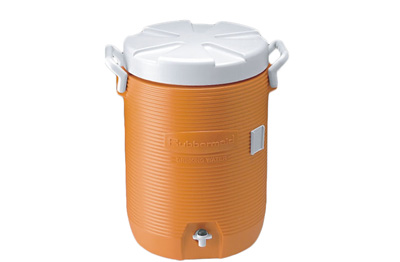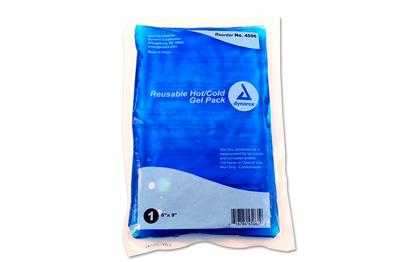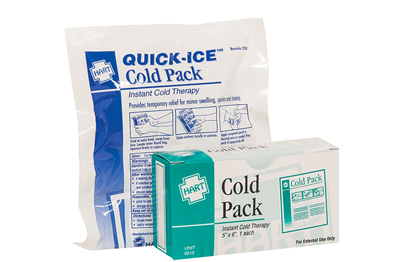
Beat the HeatWednesday, July 12, 2017 Summer's heating up and for many places across the country, that can mean extreme daytime temperatures. Depending on the air's humidity, even temperatures below 100 degrees can become downright dangerous. The way that humidity changes the temperature feel is referred to as the “heat index”, or sometimes the "apparent temperature". It is the temperature our bodies feel when evaporation is impeded due to the moisture already in the air. Our bodies are covered in sweat glands, which help us to perspire. Perspiration is unfortunate when it happens in an interview or on a date, but it is absolutely vital to survival otherwise. When your body's temperature rises, whether from exposure to heat or from exercise, your nervous system sends a signal to your glands produce sweat. As sweat reaches the surface of your skin, it evaporates to cool your body. This effect can also take place through artificial methods such as spritzing yourself with a water bottle or applying a wet towel. Drink Water
It's obvious but it has to be said: Sweat consists mostly of water and it must be replaced. In order to sweat properly and avoid dehydration, it's important to drink plenty of water every day.
Your body uses two to three liters of water to perform its basic functions, on average; in the summer, your body might require twice that depending on your activity level. When you aren't hydrated enough, you'll find that your urine is more yellow and your sweat more salty.
Understand DiureticsThe most common diuretics include alcohol and caffeine. When you consume a diuretic, your nervous system becomes confused and believes that you're retaining too much water. As a result, you run to the bathroom a lot more often than you normally would. Don't confuse your frequent trips to the John and your clear urine with hydration. Once the effects of caffeine wear off, your body will realize its mistake and you'll find yourself with a dry mouth, dry bladder and potential head and body aches. The dehydrating effects of caffeine can't be avoided, but you can curb them by understanding them. Be aware that just as with sweat, your body's precious water resources need to be replenished as your body loses them. Don't Wait Until You’re ThirstyWhen your body signals thirst, it's likely due to a fluid imbalance that increases the salt concentration in your cells. Because you are already sweating more, it can be much more difficult to correct the imbalance than to keep it from occurring in the first place. Drink a few ounces of water every hour to ensure your body's cells remain hydrated. However, avoid drinking extreme quantities of water at once, especially after sweating excessively. Just as your cells can become unbalanced with salt, they can become saturated and unbalanced with water. Both can have deadly consequences. Use a FanBecause your body always loses tiny amounts of water through its pores, evaporation happens around the clock. Air conditioning is an ideal way to keep your home cool, but you can up the comfort level without upping the energy costs with the simple use of a fan. Whether you opt for a basic box fan or go with a fancy solution, the outcome will be the same. As air moves across your skin, hot and humid air is displaced and evaporation occurs. In the wintertime, you know this effect as the "wind chill". Children & Babies
You may notice that children tire less quickly in hot conditions. They'll happily run on the playground without pause while you're chugging away on ice water in the shade of the trees nearby. Why?
Because kids have a higher surface area to body mass ratio than adults, the relative area where heat dissipation can occur is larger. Generally speaking, this means that children are better at staying cooler, especially in low-humidity climates.
However, it doesn't mean that children are immune to the effects of heat. Like adults, they do sweat and can become dehydrated, and extensive stints in the sun can absolutely cause heat-related illnesses such as heat exhaustion and heat stroke.
Use Common SenseIf it feels unnaturally hot, don't risk it. During the daytime hours between 11 am and 3 pm, the sun's UV effects are normally the most intense. During this time, heat builds up, oftentimes peaking around 5 pm in the summertime. Let your kids play outside in the morning hours before 11 am or in the evening when the sun has made its descent. Don't Forget SunscreenSwimming can provide hours of fun and exercise without the risk of overheating. But did you know that many adults are still confused about sunscreen? We can’t blame them – sunscreen’s application instructions are vague at best, and cosmetic companies haven’t made education a priority. It’s important to note that sunscreen isn't a one-and-done deal. In order for it to be effective, it must be applied liberally and often. The term "liberally" can be subjective, but the Skin Cancer Foundation recommends you use "the equivalent of a shot glass (two tablespoons) of sunscreen to the exposed areas of the face and body – a nickel-sized dollop to the face alone." The sunscreen you choose should be labeled "broad-spectrum", which means it doesn't just block the rays that cause you to burn but also those which can cause skin cancer later. It should list zinc oxide as an active ingredient - the higher the concentration, the more effective its sun-blocking powers. Choose a sunscreen with an SPF of 30 or higher. Apply sunscreen 15 minutes before going outside, and every hour after that. Finally, skip the spray sunscreen since it is oftentimes not applied properly or liberally enough, and it can be easily inhaled. Don't Give Water to BabiesWe are 60 percent water, and in babies, that concentration is even higher. So it only makes logical sense to drink water often and regularly. However, babies don't require additional water. The water contained in breast milk or formula satisfies all of their fluid needs, and adding additional liquids to the mix can cause imbalances, interfere with the absorption of nutrients and curb baby's appetite. If your child is under six months, we recommend avoiding the heat as much as you can so that baby doesn't sweat unnecessarily. DogsUnlike humans, dogs don't have the ability to sweat all over. While dogs do have some sweat glands in their noses and on their feet, they rely mostly on their lungs to evaporate moisture and produce cold air. This is why dogs pant. Although this is an effective solution to the problem of heat, it doesn't mean that your dog is immune to heat-related illnesses. In fact, some dogs are much more prone to overheating than you are. Short-nosed breeds such as bulldogs and pugs have compromised airways because of their genetic makeup, which is why many of them snort, snore or pant excessively even in cool temperatures. ExerciseIf you find that your dog is lagging behind, even at a slow pace, don't push it. Read your dog's body language and understand that when he pumps the brakes, so should you. Reserve long walks for early mornings or late nights, and keep your pup inside during the day. Don't Give Your Dog a Summer CutIf your dog has an undercoat, a summer cut will compromise his ability to regulate his own body temperature. You can easily recognize the undercoat by running your hand backward through his fur. An undercoat will be shorter, sometimes differently colored and feel different from the top coat. Common dog breeds that have undercoats include the Husky, Chow, Sheep Dogs, Pomeranians, Collies, Corgis, German Shepherds, Golden Labs, Retrievers, most Spaniels and Terriers, Schnauzers, Shih Tzus and longhaired Dachshunds. Watch the Pavement
We've all walked across the pavement barefoot only to end up in a panicked run when the realization of just how hot things are sets in. The darker the pavement, the more heat it'll absorb, but even lighter colored sidewalks can heat up to uncomfortable temperatures. According to this data, the surface temperatures of asphalt can reach 158 degrees during the summertime with concrete hovering around 120 degrees.
Heat KillsYou've heard it before: Don't leave dogs in cars. If you've ever gotten into your car on a warm day, you know that the indoor temperature of your vehicle does not reflect the outside, even with the windows down. Let's break down how this works. Whether it's 100 degrees outside or 65, a car will effectively become a greenhouse over time. In the sun, the temperature inside a vehicle will rise almost 20 degrees in just 10 minutes. In 25 minutes, the rise in temperature reaches nearly 30 degrees. In an hour, the temperature inside your car will rise over 40 degrees. That means that in the time it takes you to buy a pack of gum at your local corner store, your vehicle's internal temperature can rise from 100 to 120 degrees in the summertime. No matter the breed, age or size of your dog, temperatures above 90 are unsafe. |




 While the pads of your dog's feet are tougher than human skin, the extreme temperatures of asphalt during the summer mean you should take special precautions. If the pavement you're walking on feels too hot to you, use your judgment; it's likely to be uncomfortable or painful for your pup.
Stick to unpaved areas and move your walks to cooler times of the day before the sun's come up and after the sun's gone down.
While the pads of your dog's feet are tougher than human skin, the extreme temperatures of asphalt during the summer mean you should take special precautions. If the pavement you're walking on feels too hot to you, use your judgment; it's likely to be uncomfortable or painful for your pup.
Stick to unpaved areas and move your walks to cooler times of the day before the sun's come up and after the sun's gone down.


